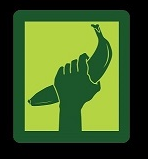Want to trap a monkey?
Try this:
(1) Find a heavy bottle with a narrow neck.
(2) Drop a banana into it.
(3) Leave the bottle where a monkey can find it.
(4) Wait.
The monkey will do the rest.
He’ll come along, smell the banana, reach in to grab it.
Then find he can’t pull it out, because the bottleneck is too small.
He can free himself easily. He just has to let go.
But he really, really wants that banana.
So he hangs on.
He’s still hanging on when you come to collect him.
And that’s how you trap a monkey.
*
Want to trap a human?
Try this:
(1) Place the human in an uncomfortable situation.
(2) Wait.
The human will do the rest.
He or she will try to reduce their discomfort by controlling the situation.
The harder they work to reduce their discomfort, the more uncomfortable they’ll get.
The harder they try to escape their discomfort, the more trapped they’ll feel.
And that’s how you trap a human.
*
This is a book about control in general, and psychological monkeytraps in particular.
A psychological monkeytrap is any situation that tempts us to hold on when we should let go — to control what either can’t or shouldn’t be controlled.
The world is filled with monkeytraps.
As is the emotional life of every human being.
I learned this from practicing psychotherapy.
Therapy also taught me four truths:
- We are all addicted to control.
- This addiction causes most (maybe all) of our emotional problems.
- Behind this addiction lies our wish to control feelings.
- There are better ways to manage feelings than control.
I call these the Four Laws of control, and they organize the four parts that follow:
Part 1: Addiction is about the idea of control, and how it structures our lives and choices.
Part 2: Dysfunction is about the most common ways control addiction makes us (and those we love) sick and miserable.
Part 3: Emotion is about the real reason we try to control people, places, things, and ourselves.
Part 4: Plan B is about moving beyond control addiction to healthier ways of handling our feelings and living our lives.
*
Finally:
You may be used to thinking of control as a solution, not a problem.
Fine. Read on.
You may not think of yourself as a controlling person.
Also fine. Read on.
You may never have tried redefining your emotional problems as rooted in your wish for control.
Terrific. Read on.
A client once described his first Al-Anon meeting as “like a light coming on in a dark room. Suddenly I could see all the furniture I’ve been tripping over all my life.”
That’s just what we’re going for here.
Welcome to the light switch.
